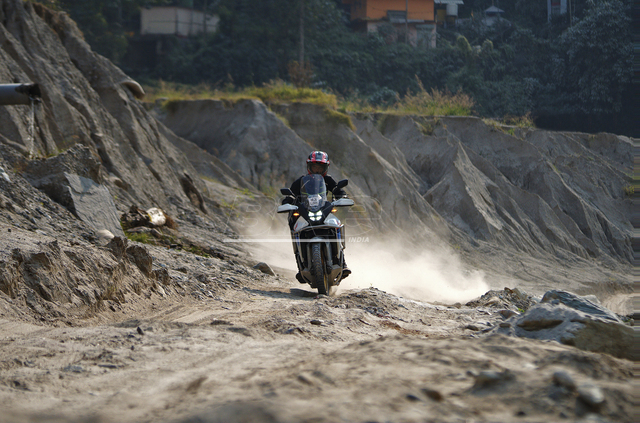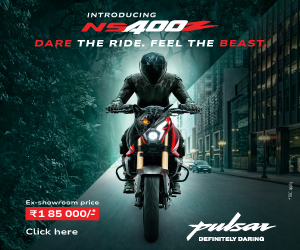When venturing into a new region, the company is crucial and we had a Honda to rely on.

Story: Joshua Varghese
Photography: Saurabh Botre
The north-eastern part of our country is extremely beautiful but it is also challenging. The weather and terrain could spring surprises around every corner. Most motorcyclists do not have the luxury of doing a reconnaissance run before actually going on a trip. Sometimes, we just have to ride into the unknown and hope for the best. To undertake an adventure like that, we needed a powerful, comfortable, and, most importantly, reliable motorcycle and that is why we picked the Honda XL750 Transalp. Not only did it meet our requirements, it was also a supremely handsome machine in the white-blue paint scheme with golden wheels.
The Honda BigWing network in India is so vast that we did not have to go hunting for an experience centre. After landing at Bagdogra, a short drive to Siliguri took us right to a BigWing experience centre. If one thinks about it, Honda is one of the few manufacturers in India who offers a wholesome line-up.
With the Transalp at our disposal, Siliguri’s horrible traffic was our first challenge. This is a motorcycle that looks huge in metal. It has a lot of road presence and it weighs 208 kilograms. That is where Honda’s engineering prowess shone through immediately. It danced its way through the congestion like a significantly smaller machine, skirting around the manic electric rickshaws and making timely use of overtaking opportunities. Its agility and balance reinforced our confidence for the journey that lay ahead.
The following morning, while most of Siliguri’s residents were sound asleep, we fired up the Transalp’s 755-cc, liquid-cooled, parallel-twin engine and headed north along a route on which I was riding for the first time. In a way, I was completely dependent on the Transalp, which is why I was able to appreciate the onboard navigation. Connection with the app was seamless and within minutes, the motorcycle was guiding me along the fastest route.
Soon the climb began and we were making our way up the first of many hills which was not a challenge for a motorcycle that was meant to answer the call of the mountains. We were able to test the Transalp’s sublime handling. Although it uses a 21-inch wheel at the front, it turns in quickly and the Metzeler Karoo Street tyres add to its stability through the remainder of the corner. An ADV handling this well is a point in its favour. Adds to the motorcycle’s versatility.
The roads in West Bengal are inconsistent. One stretch could be the most pristine surface one had ever seen but it could easily transform into the surface of the moon a minute later, which makes it difficult to carry pace. On the Transalp, it was a different story, though. Showa suspension componentry at either end is well-sprung and reasonably damped. Simply put, it absorbed everything we threw at it, giving us a stress-free ride in return.
Honda BigWing has offered a range of adjustability, including power, engine braking, two ABS modes, and traction control. With three riding modes to choose from, a setting to suit the riding style is easy to find. Furthermore, if one wants to indulge in some fun, the “User” mode can disable traction control and let the motorcycle loose on trails. The ascent into Darjeeling was accompanied by serpentine roads and stunning views with a lot of places in between that urged one to park the motorcycle and just sit and reminisce.
We tried it once and it was a tranquil experience but when more spots began to present themselves, we resisted the temptation by opening the throttle and making a break for it. Coming off some nice twisties, our pace was slackened by extremely narrow roads. Actually, the roads were just as wide, but there was a railway track running alongside the highway. Soon enough, we came upon a quaint railway station in Ghoom. Once the crown jewel of the region, the railway is in operation even today. One of the challenges posed by this arrangement was a significant increase in congestion, which once again proved that a motorcycle is the fastest way to explore.
Once we crossed the chaos of Darjeeling, we were greeted by a sea of tea estates which served as a stark contrast to all the population that seemed to be packed into every square foot a few kilometres away. With that behind us, the Ramam Bridge was our next target because it was time to leave West Bengal and head into Sikkim. The bridge is a beautiful suspension unit that spans over the River Rambang. It offers a splendid view but is wide enough to let only one vehicle pass at a time.
Compared to the chaos of West Bengal, Sikkim’s vibe was a stark contrast. On our journey towards Gangtok, the capital city of Sikkim, we lost light quickly and, by 6.00 pm, it was pitch dark but a landslide on the way meant that we had to be on the road for a couple of hours more. Thankfully, the Transalp’s bright LED headlight ensured that the road was illuminated well and we did not lose much pace. When the going is good, it is easy to cover distances quickly but we were most impressed by the Transalp’s ability to deal with the unpredictability of a motorcycle trip.
With its narrow roads and congestion, Gangtok reminded us of Darjeeling but what set it apart was the discipline of the motorists. Overtaking on the left is prohibited and enforced well in Gangtok. Even motorcycles are not allowed to sneak past on the left in standing traffic, an excellent endeavour. With 75 Nm of torque at my disposal, the Transalp had no trouble at all climbing uphill through traffic.
Following a day’s worth of exploring west Sikkim, here is what we have to say about our experience with the Transalp. The machine is flawless on the road, the enthusiasm with which it responds to input, its nimble dynamics and its confidence at speed allow the rider to have fun without exerting themselves. When we took it off the road, there was no change to the confidence the motorcycle imbibed in me. Sikkim’s natural terrain at that altitude is rocky and more technical than fun. Thankfully, the Transalp’s bash-plate kept the engine safe from the most unruly of rocks on the trail but I could feel that the motorcycle had more to offer. On the way back to Siliguri, we found a spot that ran alongside the lovely River Teesta which promised to be lots of fun. A razing river and lots of loose sand set the stage for the off-road experience. In the hands of an experienced rider, the Transalp is a big toy because there is so much fun to be had. Here also the most important aspect of the motorcycle was the way it communicated with the rider. The consistency and accuracy of the feedback allowed me to take counter-measures that prevented a face full of river sand. One may expect switching off traction control to be a scary experience on such a large motorcycle but the Transalp has a way of encouraging one to do it and when one does so, it certainly puts a smile on the rider’s face.
By the end of the day, we rolled into the experience centre at Siliguri and I had to spend a few minutes with the Transalp before I bid goodbye to it. This is without a shred of doubt a machine for the explorer among us—the most versatile tool in an explorer’s arsenal. It is also by far the best motorcycle I have used for a trip. Having done similar adventures on smaller machines, I can say with confidence that the Transalp does a phenomenal job of keeping the rider immune to fatigue. In a nutshell, if you want a middleweight parallel-twin that can do it all, the Honda XL750 Transalp is a serious contender.


Leave a Reply